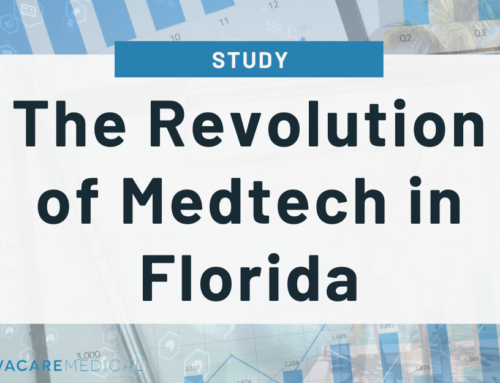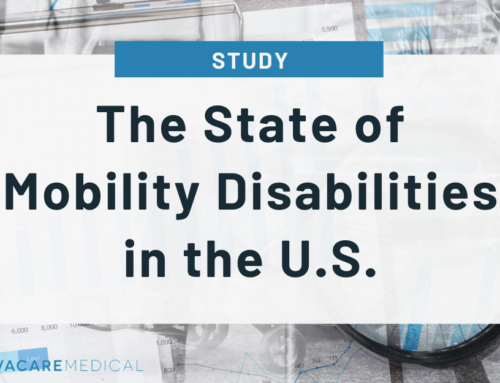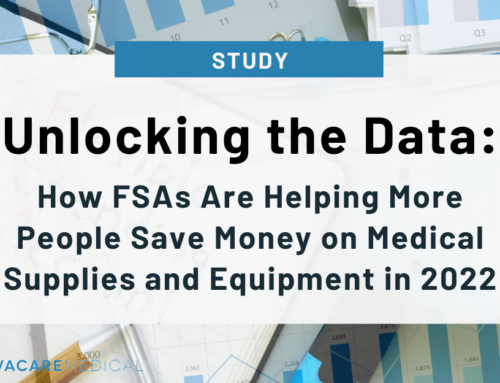Introduction to Physician Burnout
Physician burnout is a global healthcare crisis with serious implications, impacting patient outcomes and leading to reduced job satisfaction and career longevity. It is characterized by three components: emotional exhaustion, depersonalization, and a sense of reduced personal accomplishment (West et al., 2018). Nearly one in three physicians in the United States experience burnout (AAFP, n.d.), emphasizing the need to better understand its origins, symptoms, and causes, to reduce it and improve both the well-being of physicians and the quality of patient care. Specifically, it is crucial that healthcare organizations invest themselves in correcting this issue in light of the fact that the economic cost of physician burnout is estimated to be between $2.6 billion and $6.3 billion each year. This study explores the current state of physician burnout and how healthcare organizations can address the issue to reduce monetary loss and improve organizational outcomes.
Physician Burnout Survey Results
Medscape Report
According to the Medscape Physician Burnout & Depression Report 2022, stress, anxiety, and anger are contributing to increased burnout rates among physicians. The report found a five-percentage point increase in burnout overall, rising from 42% in 2020 to 47% in 2021. Additionally, the report revealed a sharp increase in emergency room physician burnout from 43% to 60% in that year. The majority of physicians noted that burnout permeates most aspects of their lives, with 54% indicating a strong to severe impact on their relationships. The survey revealed that 56% of women have faced burnout, compared to 41% of men in their physician profession. When analyzing burnout by different professions, it was found that nurses and police have a significantly higher burnout percentage compared to others, at 64% and 59% respectively. These findings highlight the urgent need to address physician burnout and improve the well-being of healthcare providers.


Mayo Clinic Proceedings
The Mayo Clinic proceedings report, published in March 2022, compared the levels of burnout and satisfaction with work-life integration among physicians and the general US working population between 2011 and 2020. The report found that physician burnout increased significantly from 38.2% in 2020 to 62.8% in 2021, reaching a new peak since the first survey in 2011. The report also found that physicians were less satisfied with their work-life integration than other workers and that burnout rates varied widely by specialty, with urology having the highest rate (54%) and ophthalmology having the lowest rate (29%). The report suggested that the COVID-19 pandemic had a major impact on physician well-being and called for urgent action to address the systemic factors that contribute to burnout.
Medical News Today
A survey of over 4,000 physicians in the United States from diverse racial and ethnic backgrounds (including white, Asian, Hispanic/Latino, and Black physicians) examined burnout, depression, career satisfaction, and work-life balance. Surprisingly, the survey found that the rates of reported burnout were significantly lower among Asian, Hispanic/Latino, and Black physicians compared to their white counterparts. The study authors suggested that this may be due to stigma preventing physicians from marginalized communities from disclosing burnout symptoms, or because the selection process may promote resilience among physicians from these racial and ethnic groups.
In contrast, we believe these numbers may reflect the fact that minority physicians tend to have greater social support networks, which help mitigate the stress of medical practice. Furthermore, they may be more likely to work in settings where they feel more culturally accepted, have more autonomy and control, and are less likely to encounter discrimination or unfair treatment.
These conclusions indicate that it is essential to address the unique challenges and experiences of physicians from all backgrounds in order to improve well-being and reduce burnout risk. For example, taking measures to reduce stigma in minority communities and introduce stronger support in white communities could help make the desired changes a reality.
Psychology Today
A survey in 2021 by the Physicians Foundation shows that 61% of physicians often experience feelings of burnout—a massive increase from 40% in 2018—indicating that the pandemic had a significant impact on the mental health and well-being of physicians.
The Impact of COVID-19 on Physician Burnout
Even before the emergence of COVID-19, the US healthcare system was already suffering from physician burnout and suicide among its workforce. After 21 months of the pandemic, the burnout rate drastically increased to a record-breaking level, with an overall prevalence of 62.8% in 2021, compared to 38.2% in 2020.
The COVID-19 pandemic exacerbated many of the factors contributing to physician burnout. Research has shown that due to COVID-related stress, 1 in 5 physicians intend to leave their current practice within 2 years (Mayo Clinic Proceedings, Science Direct).
A survey by BMC Health Services Research concluded that rates of physician burnout during the first year of the pandemic increased over time among four of five frontline specialties, with the most significant increases among hospitalist and primary care respondents.
Exploring the Hidden Causes and their Effects
Due to an overload of work and a shortage of staff in the healthcare industry, physicians face severe emotional and physical turmoil, mental exhaustion, and an overwhelmingly draining feeling. This impacts not only the physicians themselves but also the patients and the overall system. Most of the time physicians are left with unmet deadlines that cause them stress. It gets worse when their exhaustion leads to an unwanted and preventable fatality, which not only leads to professional consequences but also mental suffering as they blame themselves for causing it.
Several studies suggest that roughly 50% of physicians exhibit signs of exhaustion, cynicism, and a reduced sense of effectiveness (Stanford Medicine).
Here are 10 hidden causes of physician burnout and their potential effects:
- Emotional exhaustion – Leads to burnout and negatively impacts patient care.
- Lack of social support – Can cause feelings of isolation and burnout.
- Stigma surrounding mental health – Has the potential to worsen the issue and prevent physicians from seeking help.
- Inadequate training on stress management – May cause feelings of isolation and burnout.
- High-stress work environment – Will contribute to burnout and negatively impact patient care.
- Lack of control over work and decision-making – Can cause feelings of frustration and disengagement.
- Financial pressures – Has the ability to increase stress and negatively impact physician well-being.
- Work-life imbalance – Will lead to burnout and negatively impact personal relationships.
- Technology-related stress – Leads to burnout and negatively impacts patient care.
- Loss of meaning in work – Results in burnout and negatively impacts job satisfaction.
The Economic Costs of Physician Burnout
There are significant economic consequences of Physician Burnout. It can lead to increased healthcare costs, decreased productivity, and decreased patient satisfaction. Physician burnout costs the healthcare industry between $2.6 billion and $6.3 billion each year, according to a study by Annals of Internal Medicine.
Physicians with elevated levels of burnout were more than twice as likely (53.5% vs. 24.8%) to plan to reduce their clinical work hours or leave their current position within two years than those with low levels of burnout (Mayo Clinic Proceedings).

The total cost of burnout for all physicians practicing in Canada is estimated to be $213.1 million ($185.2 million due to early retirement and $27.9 million due to reduced clinical hours). Family physicians accounted for 58.8% of the burnout costs, followed by surgeons for 24.6% and other specialists for 16.6% (BMC Health Services Research).

Physician burnout not only affects physician well-being but also has significant financial implications for healthcare organizations. The cost of physician burnout can range from $500,000 to over $1 million per doctor, including costs related to recruitment, sign-on bonuses, lost billings, and onboarding for replacement physicians. (AMA – ASSN)
For instance, in the case of Stanford Medicine, almost 60 physicians left within two years, costing the organization between $250,000 and $1 million per physician in recruitment, depending on their specialty and rank. This resulted in an economic loss of between $15.5 million and $55.5 million over two years, highlighting that the cost of addressing burnout is minimal compared to the cost of inaction. For this reason, healthcare organizations should prioritize addressing burnout and take proactive measures to support physician well-being, improve patient care, and reduce financial costs (AMA – ASSN).
The Role of Healthcare Organizations in Addressing Physician Burnout
A survey conducted by Medscape identified that the main contributors to burnout were excessive bureaucratic tasks (58%), long working hours (37%), and a lack of respect from colleagues and administrators (37%).

The American Medical Association has revealed that healthcare organizations that prioritize reducing physician burnout can see a considerable return on investment, with potential returns of up to $6.50 for every dollar spent. Healthcare organizations have a crucial role to play in tackling this issue. To address the underlying causes of burnout, organizations can adopt the following effective strategies:
- Introducing wellness programs
- Lowering administrative burden
- Improving work-life balance
- Addressing the stigma around mental health
- Offering access to mental health resources
- Making physician well-being a priority
- Taking a preventive approach to burnout
These will have a significant impact on physician satisfaction, patient care, and organizational outcomes.
According to the 2021 Medscape National Physician Burnout & Suicide Report, physician burnout can lead to increased medical errors, lower patient satisfaction, and increased healthcare costs. By addressing physician burnout, healthcare organizations can improve patient outcomes and reduce costs while also supporting the well-being of their healthcare providers.
Conclusion
In conclusion, physician burnout is a global healthcare crisis that affects both the well-being of physicians and the quality of patient care. In light of the current pandemic and the resulting strain on healthcare systems, the prevalence of burnout has increased significantly, with an overall prevalence of 62.8% reported in 2021. The issue is complex, with various hidden causes, but healthcare organizations can take effective measures to reduce physician burnout and its associated costs. These interventions include wellness programs, reducing administrative burden, improving work-life balance, and providing access to mental health resources. By taking a proactive approach and making physician well-being a priority, healthcare organizations can improve patient care, reduce costs, and support the well-being of their healthcare providers.
References
- Physician Burnout: Its Origin, Symptoms, and Five Main Causes | AAFP. (n.d.). Retrieved March 1, 2023, from https://www.aafp.org/pubs/fpm/issues/2015/0900/p42.html
- Physician Burnout: The Silent Killer – GoInvo. (n.d.). Retrieved March 1, 2023, from https://www.goinvo.com/vision/physician-burnout/
- Shanafelt, T. D., West, C. P., Dyrbye, L. N., Trockel, M., Tutty, M., Wang, H., Carlasare, L. E., & Sinsky, C. (2022). Changes in Burnout and Satisfaction With Work-Life Integration in Physicians During the First 2 Years of the COVID-19 Pandemic. Mayo Clinic Proceedings, 97(12), 2248–2258. https://doi.org/10.1016/j.mayocp.2022.09.002
- West, C. P., Dyrbye, L. N., & Shanafelt, T. D. (2018). Physician burnout: Contributors, consequences and solutions. Journal of Internal Medicine, 283(6), 516–529. https://doi.org/10.1111/joim.12752
- https://www.medicalnewstoday.com/articles/physician-survey-reveals-widespread-burnout
- https://www.sciencedirect.com/science/article/pii/S2542454821001260
- https://www.cmadocs.org/newsroom/news/view/ArticleId/49885/Study-finds-COVID-19-pandemic-has-driven-physician-burnout-to-an-all-time-high#:~:text=By%20the%20end%20of%202021,2021%2C%20compared%20with%2038.2%25.
- https://bmchealthservres.biomedcentral.com/articles/10.1186/s12913-022-07728-6
- https://www.mayoclinicproceedings.org/article/S0025-6196(22)00515-8/fulltext#secsectitle0010
- https://www.prnewswire.com/news-releases/medscape-physician-burnout–depression-report-2022-shows-pandemics-continued-impact-301465333.html
- https://www.medscape.com/slideshow/2022-lifestyle-burnout-6014664?faf=1#29
- https://med.stanford.edu/news/all-news/2018/07/medical-errors-may-stem-more-from-physician-burnout.html
- https://www.bmj.com/content/366/bmj.l4774
- https://www.ama-assn.org/practice-management/physician-health/why-health-organizations-should-commit-fighting-physician
- https://bmchealthservres.biomedcentral.com/articles/10.1186/1472-6963-14-254
- https://www.ama-assn.org/practice-management/physician-health/how-much-physician-burnout-costing-your-organization
- https://hbswk.hbs.edu/item/the-economic-cost-of-physician-burnout
- https://www.healthcaredive.com/news/physician-burnout-costs-industry-46b-annually/555631/
- https://www.psychologytoday.com/us/blog/the-future-brain/202108/new-survey-shows-significant-increase-in-physician-burnout






